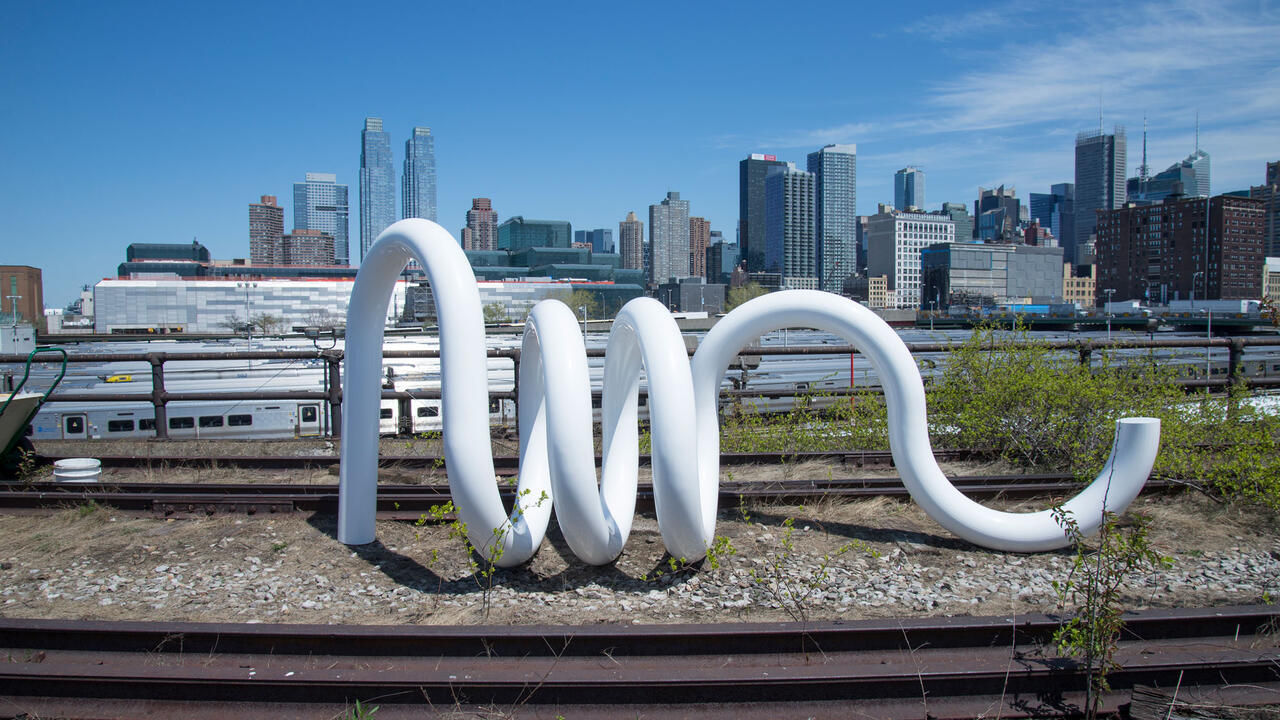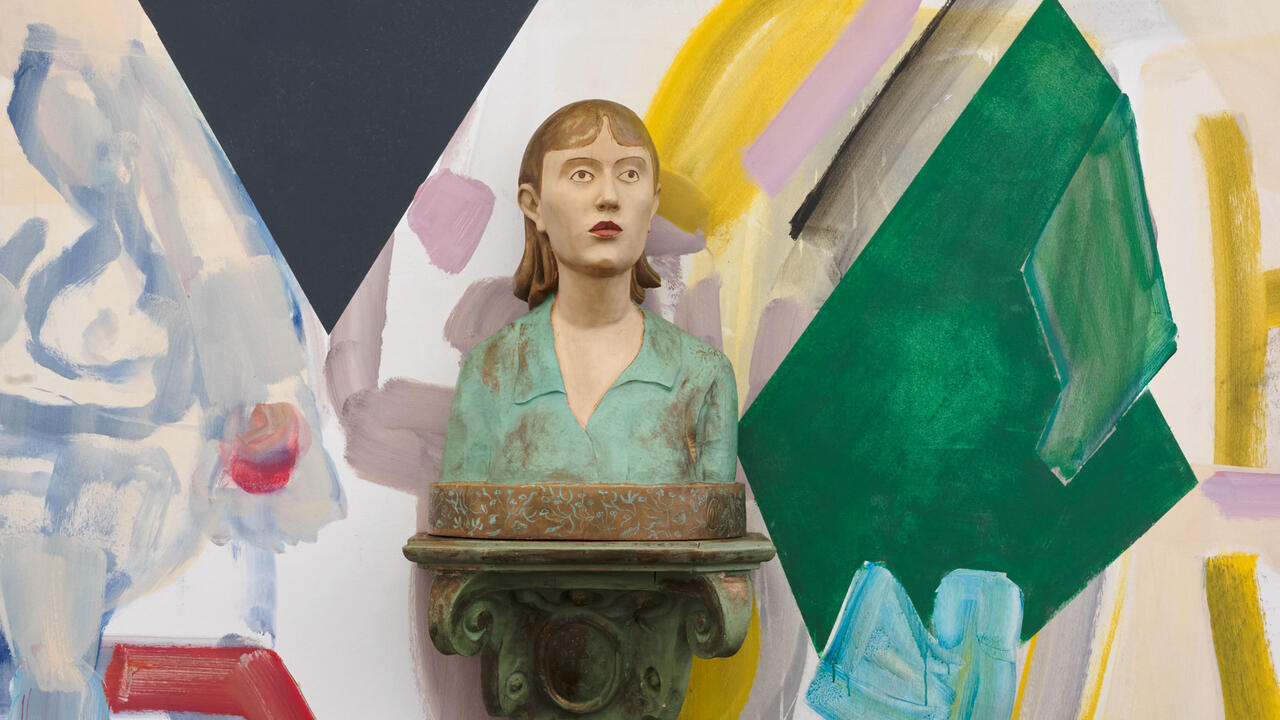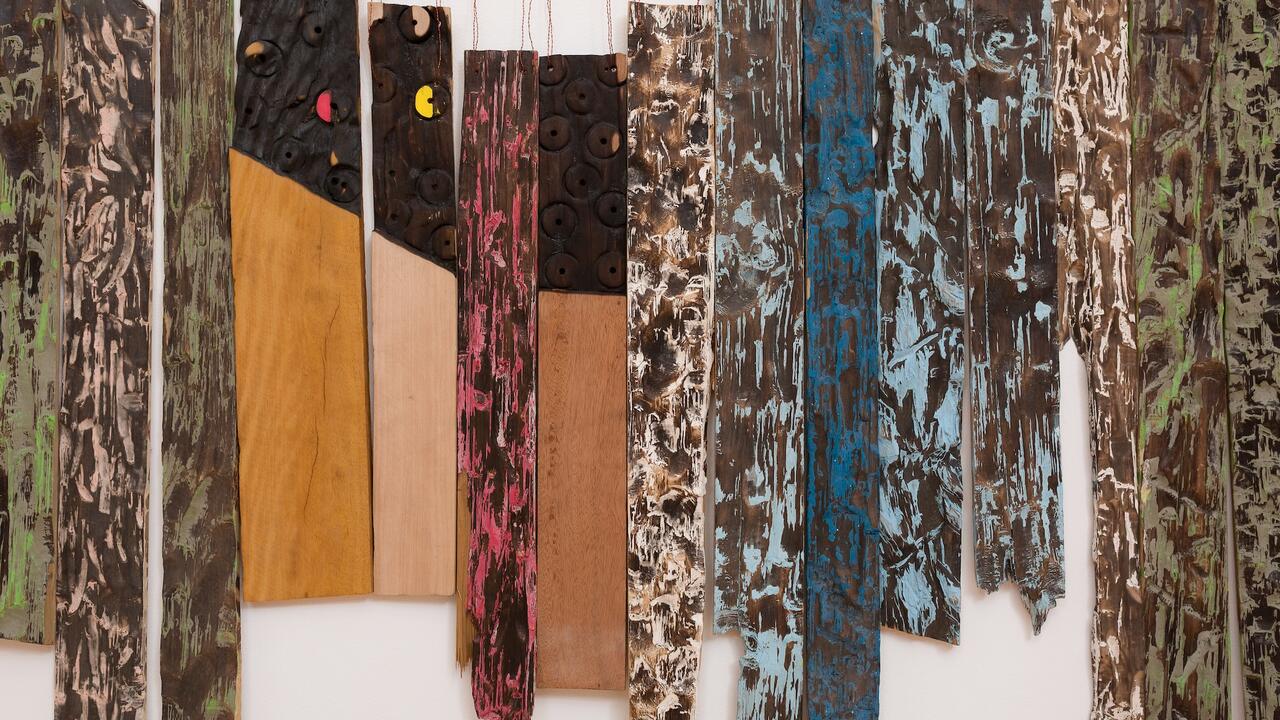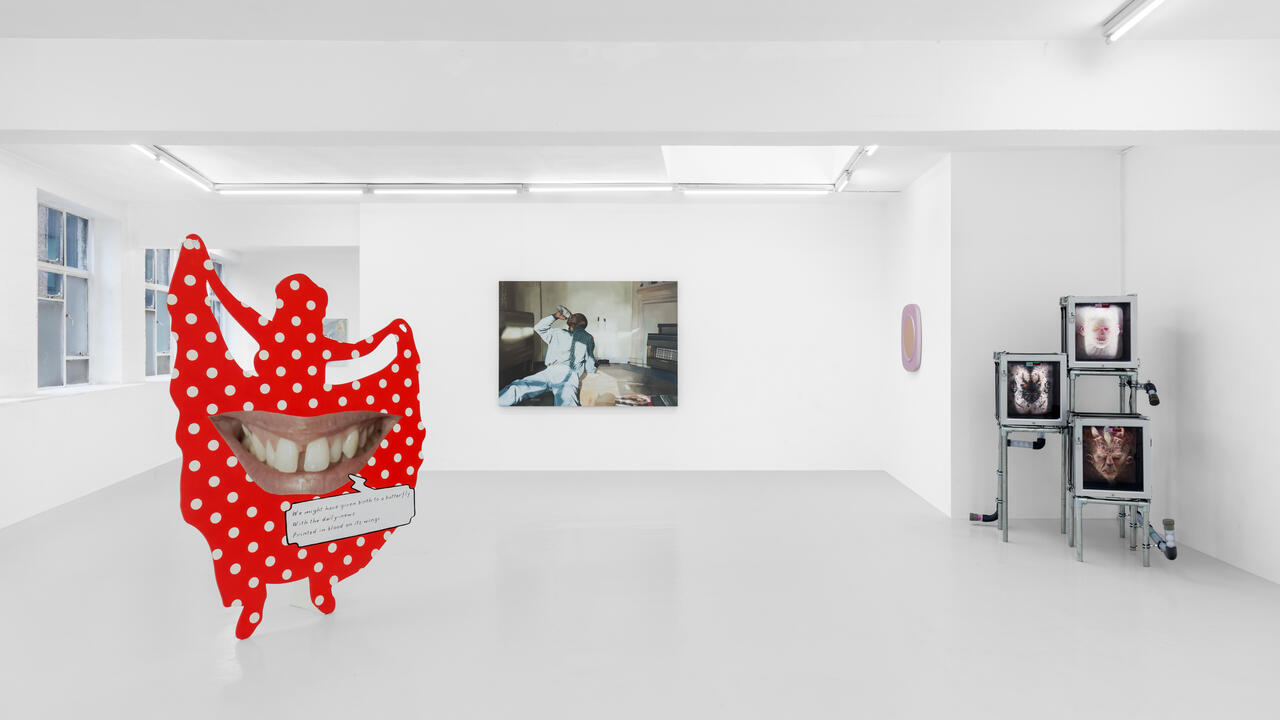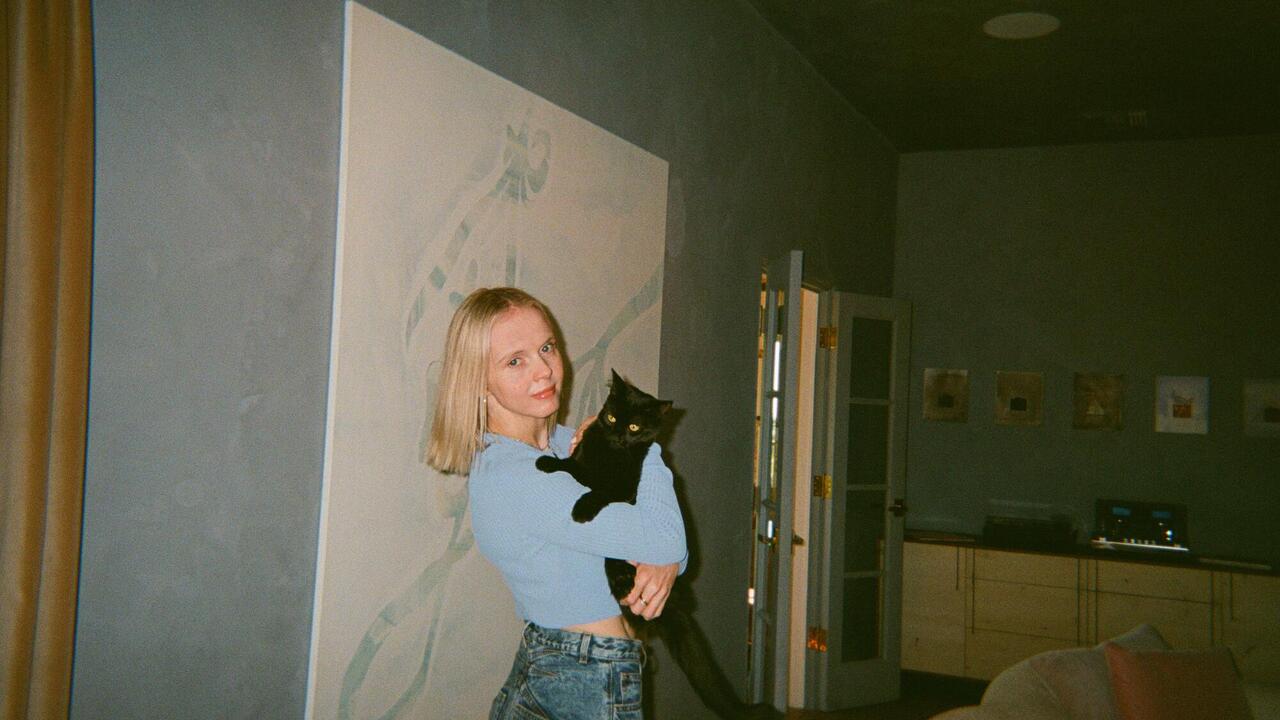Formal Wear
Judith Clark talks to Diane Simpson about the influence of abstraction, architecture and fashion on her sculptures
Judith Clark talks to Diane Simpson about the influence of abstraction, architecture and fashion on her sculptures

I had my first real encounter with Diane Simpson’s work in early 2016 at Herald St in London, where it was installed alongside paintings by Lesley Vance. The gallery had been divided into three small spaces, each containing examples of Simpson’s architectural sculptures of clothing, ranging from an iconic ‘Samurai’ suit from 1983 to recent work. While Vance’s paintings were ‘Untitled’, Simpson’s work declares its sources: titles such as Box Pleats (1989), Collar (Connect the Dots) (2008), Two Collars (2008) and Peplum III (Tweed) (2014) direct us back to an apparently familiar history of dress. These items are transformed, through Simpson’s particular method of axonometric drawing, into diagrams that are then re-created in 3D space. Walking around her sculptures, we are invited by their angled perspectives to re-imagine them as drawings, to flatten them out in order to recompose them in our minds.
My background is in fashion exhibition-making: I am used to translating flattened items of clothing by presenting them on bodily forms. There are no surrogate bodies, however, in these sculpted clothes; there is nothing akin to a mannequin. They are, in the fullest sense, freestanding and complete.
As the 30-year span of the works at Herald St revealed, Simpson has been loyal to her distinctive idiom. I spoke to her about the exhibition, a concurrent solo show at the Institute of Contemporary Art Boston and her inclusion in the large group presentation, ‘Unorthodox’, at New York’s Jewish Museum. I was struck by her emphasis on abstraction as newness and her preoccupation with the translation of source objects.
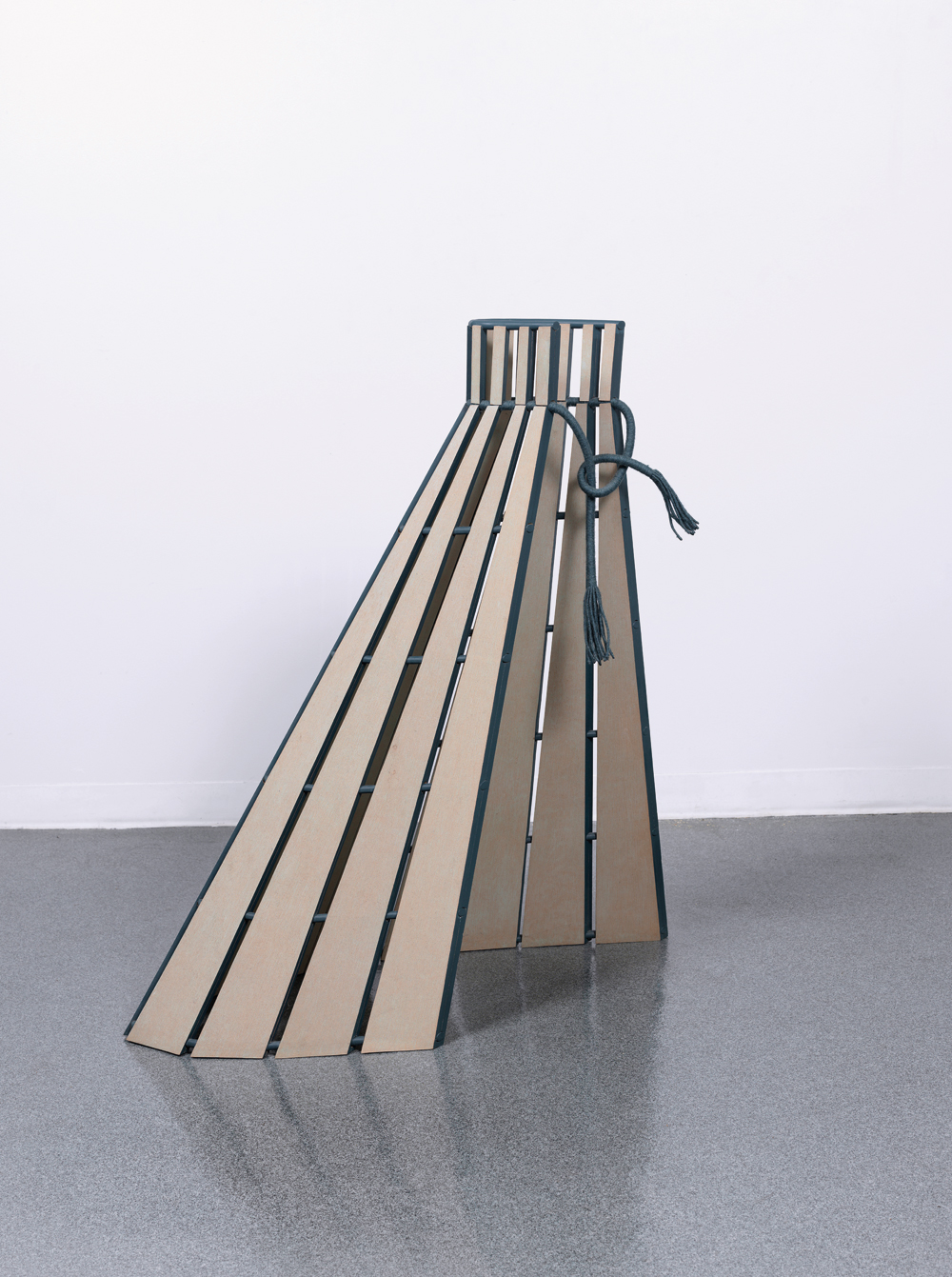
Judith Clark Your work resists comfortable perspectives, but its particular effect depends on the containing architecture’s perpendicular planes. For your 2010 retrospective at the Chicago Cultural Center, you built more walls and floors in the space: not plinths, but surfaces at 90-degree angles. Your work is often simultaneously sculpture and mount and, sometimes, the boundaries between the two seem particularly important. There are certain works in which the objects, whilst rigid, appear to be sliding on and off their mounts.
Diane Simpson I have never liked perching my sculptures on anonymous blocks of wood. With some early works, like the ‘Samurai’ series (1981–83), this wasn’t an issue as they were large, freestanding floor pieces. With others, such as Formal Wear and Muff (both 1998), I introduced additional sections, integral to the main piece, which would connect to the wall while allowing the ‘item of clothing’ itself to float free. Other works have been suspended from the ceiling (Cape, 1990; Sleeve-Sling, 1997) or suspended from a standing structure (Sleeve-Pod, 1997; Vest Scalloped, 2010). With the ‘Aprons’ series (2000–05), though, my main interest was in devising a lower section that would serve as a mount but, at the same time, be integrated completely with the upper section of the apron form.
When you say ‘sliding on and off their mounts’, I think you might mean that there is often more than one solution for displaying my work. Cape and Boshi (1995) were originally conceived as floor pieces until a curator had a better idea and suspended Cape from the ceiling and mounted Boshi on the wall. I often have alternative options for mounting the same work.
JC I also meant literally sliding, as with Sleeve-Sling or Vest Scalloped, where gravity seems to enter into play with the tensions created between object and mount. The form is rigid, which tells us it is fixed, but the allusions to cloth suggest that it will not stay put.
DS Yes, I think Muff also suggests that uneasy ‘sliding off’ sensation, especially due to the angled support. This tension was not something I was consciously aware of or focused on as I made these pieces, but I like that you feel it.

JCIn a way, this idea of continuity between object and mount was performed more literally when the backdrops to your sculptures also became decorative, as in your wonderful art deco window installations, which were on show at the Racine Art Museum, Wisconsin, in 2007 and then at New York University’s gallery space on Broadway in 2014. The grid, so much part of your drawings, became tiles in these pieces. Could you describe allowing your work to ‘spill’ into a window display and your references to fashion window dressing?
The formal qualities in various applied-art disciplines compare to a style I'd describe in painting as 'organic abstraction': refined forms combining geometric angles with softened curved shapes.
DSWhen I had the opportunity to fill six street-level windows for a year at the Racine Art Museum, I remembered a book I had found years ago at a used book fair: a compilation of monthly journals from 1928 for the ‘window dresser’ or ‘window trimmer’ as these men (they were always men) were sometimes called. Journals such as Merchants Record and Show Window and another book from that same period, The Manual of Show Window Backgrounds for Mercantile Display, were invaluable resources for this project. I took my cues for the backdrop designs from these books and combined them with sculptures that integrated in terms of shape, colour and mood. My eyes were very much focused on art deco design in clothing, architecture, furniture, linoleum, wallpaper etc.
The title, ‘Window Dressing’, was my homage to the ‘window dressers’ of the 1920s and ’30s. ‘Dressing’ – clothing and adorning the body – has been a source for my sculpture for many years. I am also interested in the idea of ‘dressing up’ – embellishing or decorating, to draw attention to something – which, of course, is the objective of merchandise display windows.
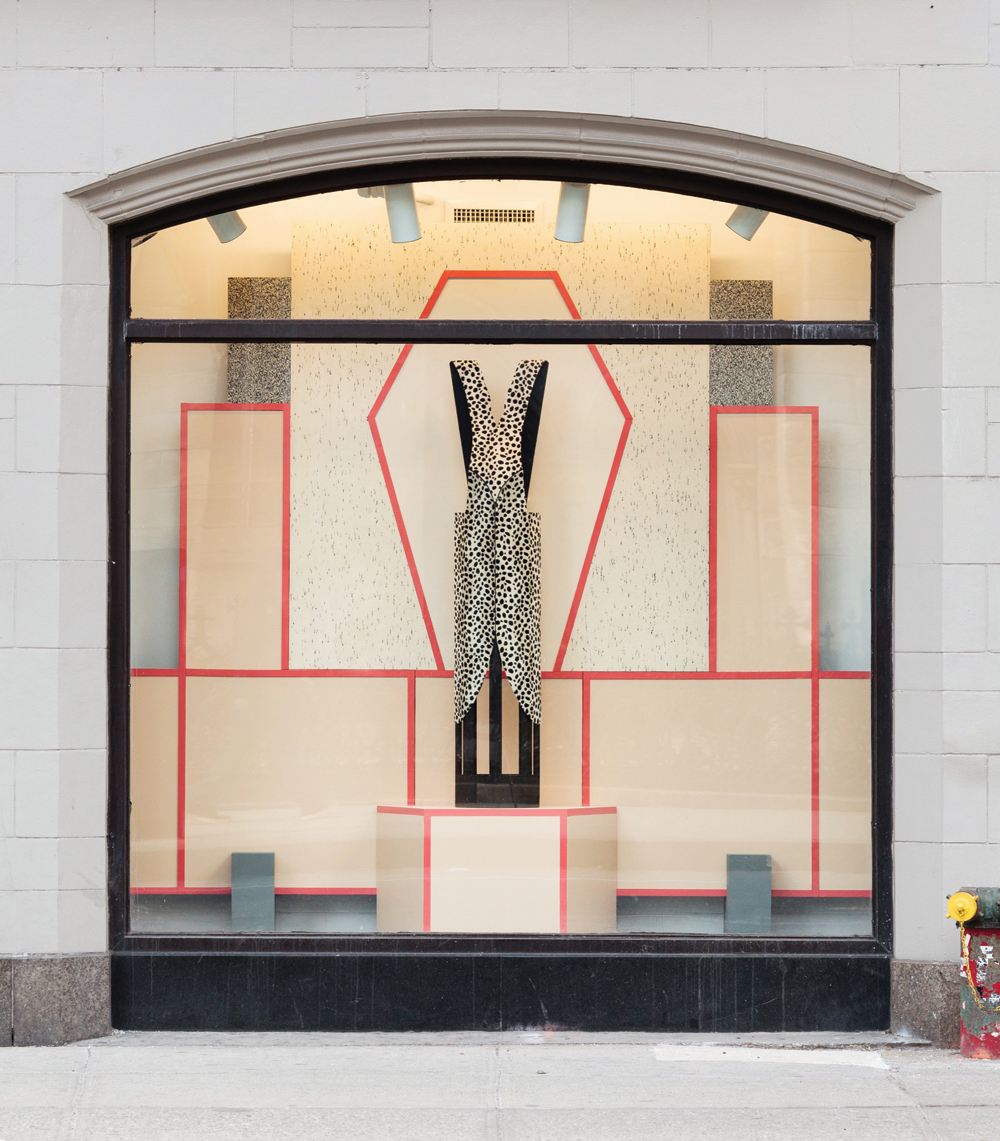
JC Why does the art deco period hold a particular fascination for you? Is it the fact that motifs were so successfully translated between disciplines – from bookbinding to furniture, say – or is it the nature of the decorative abstractions?
DS I’m interested in art deco for both of the reasons you mention. I’m attracted to the crossover between multiple disciplines in the first decades of the 20th century and the ways in which these were integrated by movements like the Wiener Werkstätte, or in the work of architects such as Eliel Saarinen in Finland, Charles Rennie Mackintosh in the UK or the Viennese architects Josef Hoffmann and Adolf Loos. Hoffmann’s designs in glass, as well as those that Michael Powolny produced in what is now the Czech Republic, also come to mind and were especially wonderful. But, as you suggest, I’m equally attracted to the formal qualities in these various applied-art disciplines; I could compare these to a style I’d describe in painting as ‘organic abstraction’ – put very simply: refined forms combining geometric angles with softened curved shapes. In objects from this period, surface details are not arbitrary but are integrated into an overall form. An example in architecture that comes to mind is the interior of Otto Wagner’s Postal Savings Bank building in Vienna [constructed between 1904–06]. The forms have a softened organic geometry and surface patterns create rhythms that reflect the building’s interior structures.
I’m also interested in vernacular architecture, like garden and farm structures – such as the old-fashioned corn cribs and silos sometimes still seen on farms in the US. I was very excited to discover, in the 1970s, the photographs that Bernd and Hilla Becher had been taking of European industrial structures – such as lime kilns, water and cooling towers – that are almost extinct now. These utilitarian structures were designed by engineers, not architects; their concern was with function, so their approach to design was not self-conscious. And yet, the results are gorgeous structures that have wonderful shapes and repetitive patterns. The Bechers’ book, Anonymous Sculptures (1970), has been an important source of inspiration for me.
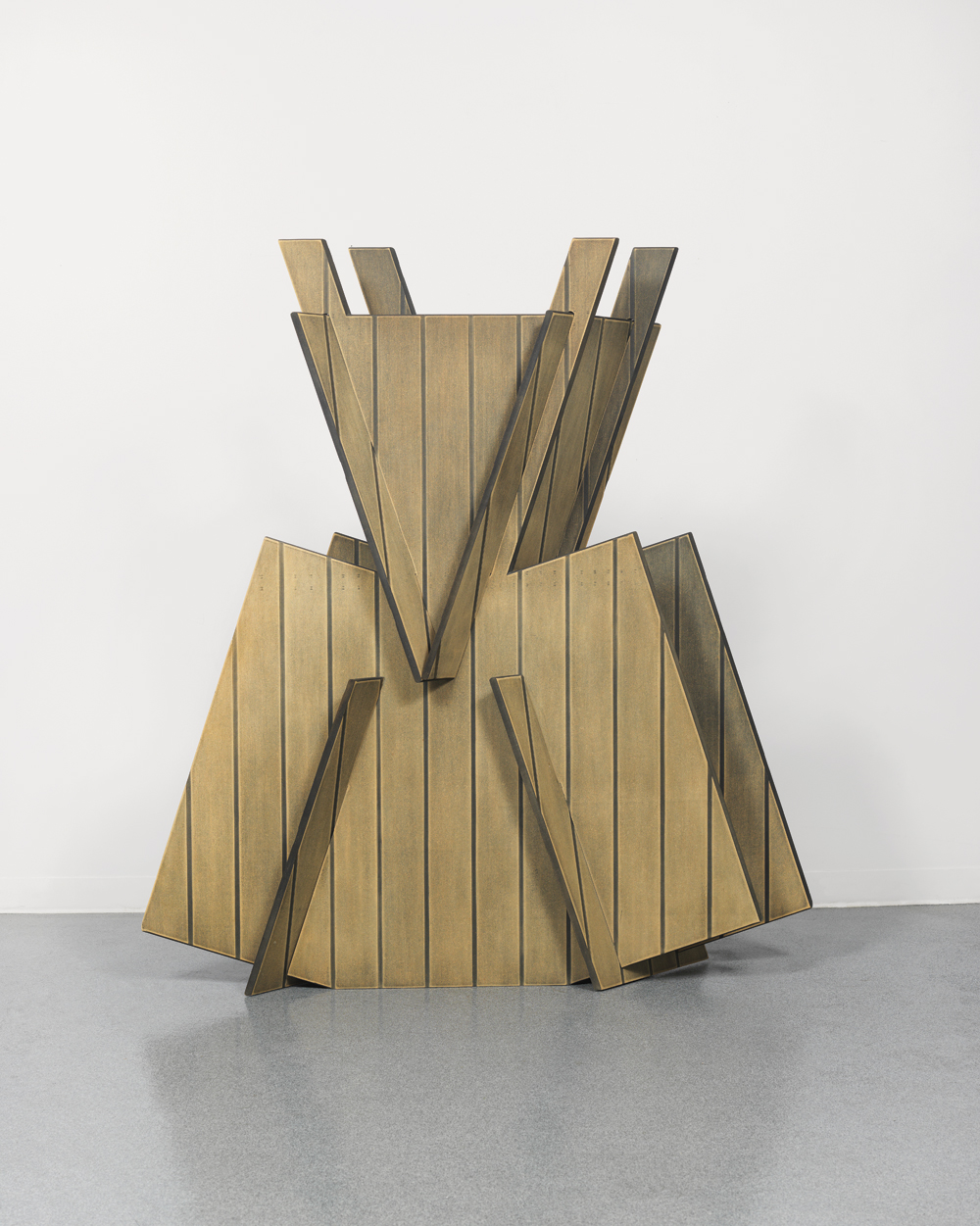
JC What sparks your fascination with a given period? Does it tend to be an object or what it represents? Your pieces contain whole worlds within them: an object like an Amish bonnet or a Samurai costume embodies a particular belief system and a code of heavily ritualized behaviour.
DS I think I initially tend to be attracted to an object’s formal qualities rather than a broader idea or belief system. For instance, with Amish Bonnet (1992), I was interested in the shape of the small, modest white cap made of mesh-like material. In particular, I liked the looped shape that comes down over the ear. I go to a farmer’s market in the summer near where I live in Wilmette, Illinois, and a group of Amish women sell baked goods there; I have been tempted, on occasion, to
ask if I could purchase one of their hats.
I begin each piece by looking at a specific image. Then, through the process of drawing — abstracting it, to a certain degree — the form becomes something personal to me. In fact, my drawing and the resulting sculpture are often far removed from the source.
With the Samurai armour, it was different. I was very moved by a particular scene in the film Kagemusha [Shadow Warrior, 1980] by Akira Kurosawa. In that scene, I remembered clearly, there are several Samurai warriors sitting on the floor in a semi-circle with their backs to the camera. Their ritualized formation and the repeated shape of their armour skirts curving down from their waist onto the floor was a strong image for me and led me to investigate the shapes and construction of Samurai armour.
JC I think pieces like your ‘Samurai’ sculptures, which are freestanding, provoke complicated ways of looking. On the one hand, they are upright, almost impersonating a body, inviting comparison with the human form; on the other, because they are modelled on axonometric drawings, which are themselves 2D schematizations of 3D forms, our perspective on them is skewed. Something that might, at first, appear familiar (or domestic) therefore demands a second look. When viewers are asked to participate in this act of translation from 2D to 3D, what are you asking them to see?

DS I’m interested in the final form being suggestive of the source but not a literal interpretation. I begin each piece by looking at a specific image. Then, through the process of drawing the image – abstracting it, to a certain degree – the form becomes something personal to me. In fact, my drawing and the resulting sculpture are often far removed from the source. If the final sculpture retains something of the original, which enables the viewer to connect in some way with what it was about a particular object that interested me, that’s fine, but it’s not necessary. Each viewer can make his or her own personal connections.
My undergraduate art training was in drawing and painting so, at graduate level, I chose to enter the painting department at the School of the Art Institute of Chicago. During that period, between 1975–78, I concentrated on making drawings on large sheets of graph paper. I invented what I thought was my own system of drawing, which enabled me to clearly visualize a 3D object. (Since that time, various names have been attached to the type of perspective I use, but none seem to fit into a legitimate category of geometry.) I was encouraged to actually build some of these very schematically drawn objects and I became interested in transferring to actual space the illusionistic spatial system of the drawings. These first constructions were attached to the wall – a substitute for the back plane in the drawing. Later pieces were freestanding but retained the same orientation. Eventually, as I started using materials that were incompatible with this angled method of construction, or where the requirements became too complex, I had to replace the 45-degree angle with a more conventional 90-degree one. Recently, I have been experimenting with angles between the two.
JC Dan Byers, who curated your recent survey show at the Institute of Contemporary Art Boston, has described your work as ‘mysteriously abstract’. I think he is referring to the way in which a deceptively simple shift in orientation turns dresses into monuments.
DS Even for me, even now, there is a mystery to the angled pieces: things happen when I construct the form that I can’t anticipate or actually visualize in the drawing.
Perhaps the idea of ‘mysterious abstraction’ also relates to the origins of the drawing system I developed, which has its roots in the spatial perspectives used in medieval paintings, particularly Persian or Indian miniatures and Japanese scrolls. I was interested in the way architectural elements were spatially described using a parallel perspective, which gives a bird’s-eye view that results in a very immediate presence.

JC The use of dress is frequently associated with feminist art. Could you comment on that?
DS I have often been asked if or how my work relates to feminist art. I don’t think feminism in the political sense is a driving force behind the work. However, I guess you could say that my subjects (aprons, uniforms, bibs) are feminist to the extent that they relate to my personal experience as a woman growing up in a particular era. I think they are connected to my childhood memories of crisp white nurses’ uniforms, women’s large full-length aprons, my children’s bibs, or even the catcher’s chest protector from my grandson’s baseball games.
JC Your ‘Found Collars’ (2009) are shockingly feminine compared to the monumentality of your structures. They remind me of the embroidery samplers in the archive at London College of Fashion. The incredible thing about these is that they are impossible to date; I recently found some – one dated 1920, one 1930, one later: all identical. What is the relationship between the unique and the mechanically produced for you? Your work reminds me of Leonardo da Vinci’s machine to make sequins [sketched c.1480–82]: it plays on both masculine and feminine stereotypes.
DS I have no specific information about the origin of the two collars that I used to make Found Collar and Found Collar 2. I came across both at a fantastic rummage sale I attend every year. These are the only two instances in which I have incorporated readymade objects so directly into my work: I didn’t do a drawing, I applied the actual found collars to the sculptures. It felt almost like I was cheating: as though a beautiful but foreign element had insinuated itself into my process.
JC This leads me to the idea of ‘type’. You quote types of clothing rather than an individual’s dress; you seem to gesture towards schools or categories of art or architecture rather than specific works. It makes the references appear recognizable; I thought, for a moment, I had spotted something out of a Pochoir plate from the fashionable early-20th-century Parisian magazine Le Gazette du Bon Ton [1912–25 ], for example.
DS By the time I complete a sculpture, it is always an abstraction. That’s why I title my works with general categories of objects.
JC What about the body? Are the garments that populate your work a form of protective shield?
DS The body as subject has been my primary interest from my earliest days in art school. I continue to take my cues from it: I’m often aware of a particular attitude, or of how an article of clothing is positioned and affected by a pose. I have always seen clothing as an extension of my interest in human form.
Diane Simpson is an artist based in Chicago, USA. Recent exhibitions include Herald St, London, UK (with Lesley Vance, 2015); Silberkuppe, Berlin, Germany (with Lui Shtini, 2015); Broadway Windows, New York University, USA (2014); Corbett vs. Dempsey, Chicago, USA (2013); and JTT, New York, (2013). A major survey of Simpson’s work ran at the Institute of Contemporary Art Boston, USA, until 27 March and an iteration of her installation Window Dressing will be displayed at the Museum of Contemporary Art Chicago until 3 July. Her work was also included in the recent group exhibition, ‘Unorthodox’, at the Jewish Museum, New York.










